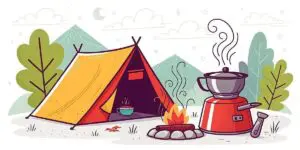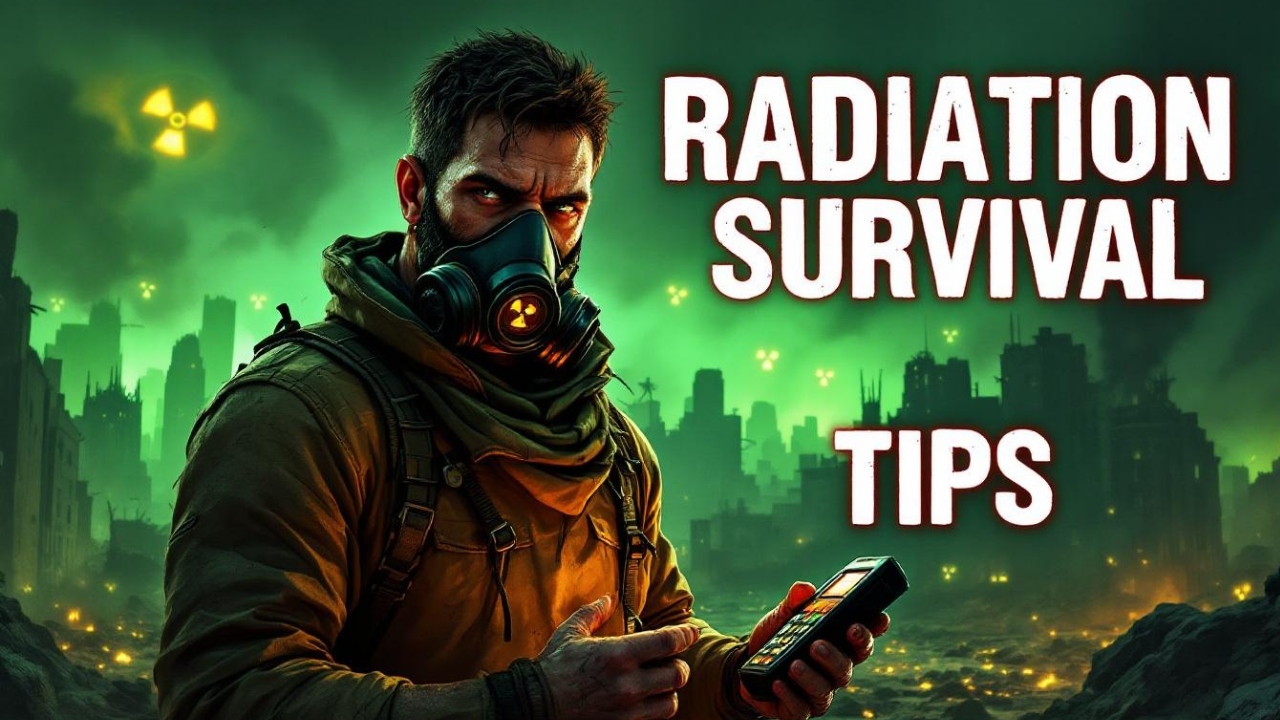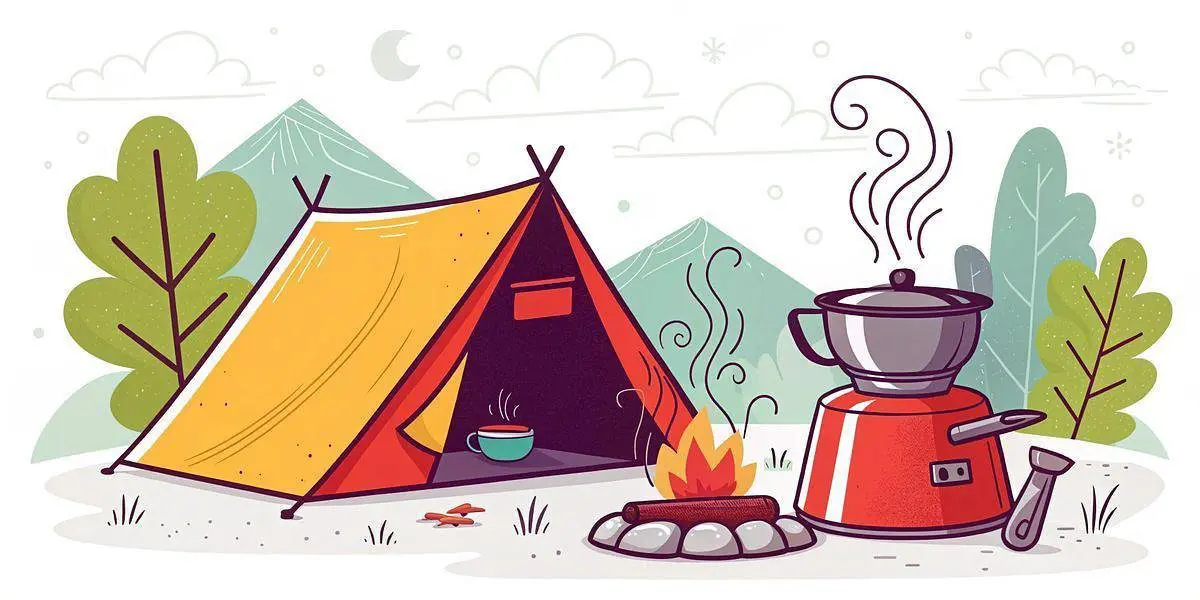Introduction: The Fragility of Our Digital World
In mid-July 2024, a massive technological outage struck due to a software glitch, disrupting countless businesses and everyday lives. This digital blackout exposed the fragility of our global tech infrastructure. While inconvenient, it wasn’t the worst-case scenario. The outage served as a stark reminder of how dependent we are on technology and how vulnerable our systems can be to unexpected failures.
Imagine a more severe blackout lasting months or even years, affecting everyone. The repercussions would be far more devastating. Essential services like healthcare, banking, communication, and transportation would grind to a halt. Supply chains would be disrupted, leading to shortages of food, water, and other critical supplies. Social order could deteriorate as people struggle to meet their basic needs.
In such a scenario, being unprepared could have dire consequences for you and your family. It’s crucial to understand the potential challenges and equip yourself with the knowledge and resources to navigate these events. Let’s explore potential scenarios and provide you with practical tips to prepare for a prolonged digital blackout, ensuring your family’s safety and well-being.

Understanding the Potential Scenarios
1. Infrastructure Collapse
A prolonged digital blackout would lead to the collapse of critical infrastructure. Power grids, water supply systems, and communication networks rely heavily on digital technologies for their operation and maintenance. Without these technologies, these systems would fail, leaving communities without essential services.
- Power Outages: Extended power outages would mean no electricity for heating, cooling, cooking, or lighting. Hospitals, emergency services, and other critical facilities would struggle to operate.
- Water Supply Disruptions: Water treatment plants and distribution systems rely on automated controls. A digital blackout could lead to water shortages and contamination issues.
- Communication Breakdown: With the internet and phone networks down, staying informed and communicating with loved ones would become challenging. Emergency services would also be affected, making it harder to call for help.
2. Economic Impact
The economic impact of a prolonged digital blackout would be severe. Businesses of all sizes would face operational challenges, leading to widespread job losses and economic instability.
- Banking and Finance: Digital banking systems would be inaccessible, making it difficult to access money, process transactions, or pay bills. The stock market and other financial institutions would be in turmoil.
- Supply Chain Disruptions: The global supply chain relies on digital systems for tracking and managing inventory. A blackout would disrupt the flow of goods, leading to shortages of essential items like food, medicine, and fuel.
- Unemployment: Many jobs rely on digital technologies. A prolonged blackout would lead to layoffs and economic hardship for millions of people.
3. Social Unrest
As resources become scarce and essential services fail, social order could deteriorate. Communities may face increased crime, civil unrest, and conflicts over limited resources.
- Increased Crime: With law enforcement stretched thin and security systems down, crime rates could rise. Looting, theft, and violence may become more common.
- Civil Unrest: Desperation and frustration could lead to protests, riots, and clashes between different groups. Maintaining social order would become increasingly difficult.
- Community Resilience: Strong, resilient communities would be better equipped to handle the challenges. Cooperation and mutual support would be essential for survival.

Preparing for a Prolonged Digital Blackout
Develop a Comprehensive Emergency Plan
Having a well-thought-out emergency plan is crucial. This plan should cover various aspects of survival, including food, water, shelter, medical care, and communication. Let’s go ahead and dive in below to give you everything you need to be prepared for the next Digital Blackout!
Communication: Ensuring Connectivity During a Digital Blackout
Effective communication is crucial during any crisis, and a prolonged digital blackout is no exception. When traditional communication channels like cell phones, internet, and landlines become unreliable or unavailable, having alternative methods to stay in touch with family, friends, and your community can make a significant difference. Here’s how to invest in non-digital communication tools and establish a comprehensive communication plan.
1. Invest in Non-Digital Communication Tools
Non-digital communication tools can provide reliable ways to communicate when modern technology fails. Here are some key options to consider:
- Two-Way Radios (Walkie-Talkies): These portable devices are excellent for short-range communication, typically up to a few miles, depending on the terrain and obstacles. They are easy to use and don’t rely on external infrastructure.
- Features to Look For: Long battery life, multiple channels, privacy codes, weather resistance, and a good range.
- Recommended Models: Motorola Talkabout T800, Midland GXT1000VP4.
- CB Radios (Citizen’s Band Radios): CB radios are ideal for medium-range communication, often used by truckers and off-road enthusiasts. They operate on 40 channels and can reach distances of up to 20 miles, depending on conditions.
- Features to Look For: SSB (Single Side Band) capability, weather channels, noise filters, and a reliable power source.
- Recommended Models: Cobra 29 LX, Uniden BEARCAT 980 SSB.
- Ham Radios (Amateur Radios): For long-range communication, ham radios are the best option. They can communicate over hundreds or even thousands of miles, depending on the frequency and atmospheric conditions. However, operating a
ham radio requires a license.- Features to Look For: Dual-band capability (VHF/UHF), high power output, digital modes, and portability.
- Recommended Models: Baofeng UV-5R, Icom IC-7300.
- Emergency Radios: These radios are designed to receive emergency broadcasts and weather alerts. Many models come with additional features like hand-crank generators, solar panels, and built-in flashlights.
- Features to Look For: Multiple power sources (battery, solar, hand-crank), NOAA weather alerts, AM/FM bands, and portability.
- Recommended Models: Kaito KA500, Midland ER310.
Establish a Communication Plan
Having the right tools is only part of the solution. A well-thought-out communication plan ensures that everyone knows how to use these tools effectively and can stay connected during a crisis.
- Identify Key Contacts: Make a list of essential contacts, including family members, friends, neighbors, and emergency services. Ensure everyone in your household knows who to contact in different scenarios.
- Designate Communication Methods: Decide which communication tools will be used for different situations. For example, use two-way radios for immediate family communication and CB or ham radios for reaching out to the broader community.
- Set Up Regular Check-Ins: Establish regular check-in times to ensure everyone is safe and accounted for. This could be hourly, daily, or at specific times of the day, depending on the situation.
- Create Code Words: Develop code words or phrases for sensitive information. This adds an extra layer of security, ensuring that even if your communication is intercepted, the information remains confidential.
- Practice and Drills: Regularly practice using your communication tools and executing your communication plan. Conduct drills to ensure everyone is familiar with the equipment and knows what to do in an emergency.
- Backup Plans: Have backup methods for communication in case your primary tools fail. This could include written notes, signal mirrors, or even pre-arranged meeting points.
Educate and Train Your Family
Ensure that every family member understands how to use the communication tools and is familiar with the communication plan.
- Hands-On Training: Provide hands-on training sessions for each communication device. Show how to turn the devices on and off, change channels, and use any special features.
- User Manuals: Keep user manuals for all communication devices in an easily accessible location. Highlight key sections and add notes for quick reference.
- Emergency Communication Kit: Assemble an emergency communication kit that includes all your non-digital communication tools, extra batteries, chargers, user manuals, and a printed copy of your communication plan. Store the kit in a central, easily accessible location.

Leverage Community Networks
Strong community networks can enhance your communication capabilities and provide additional support during a crisis.
- Neighborhood Communication Plan: Work with your neighbors to develop a neighborhood communication plan. This could include a phone tree, radio check-ins, or designated meeting points.
- Local
Ham Radio Clubs: Join localham radio clubs or emergency communication groups. These organizations often provide training, resources, and a network of experienced operators who can assist during emergencies. - Community Bulletin Boards: Set up community bulletin boards or message centers where people can leave notes and updates. This can be a valuable resource if digital communication is unavailable.
Stay Informed
Staying informed about the latest developments during a crisis is crucial for making informed decisions.
- Emergency Alerts: Use emergency radios to receive weather alerts, news updates, and emergency broadcasts from local authorities.
- Local News: Tune into local AM/FM radio stations for news and information. Local stations often provide timely updates during emergencies.
- Public Safety Channels: Monitor public safety channels using your communication devices. This can provide valuable information about ongoing situations and emergency response efforts.
By investing in non-digital communication tools and establishing a comprehensive communication plan, you can ensure that your family remains connected and informed during a prolonged digital blackout. Effective communication is a cornerstone of preparedness, enabling you to coordinate efforts, share information, and maintain a sense of security and control in the face of uncertainty.
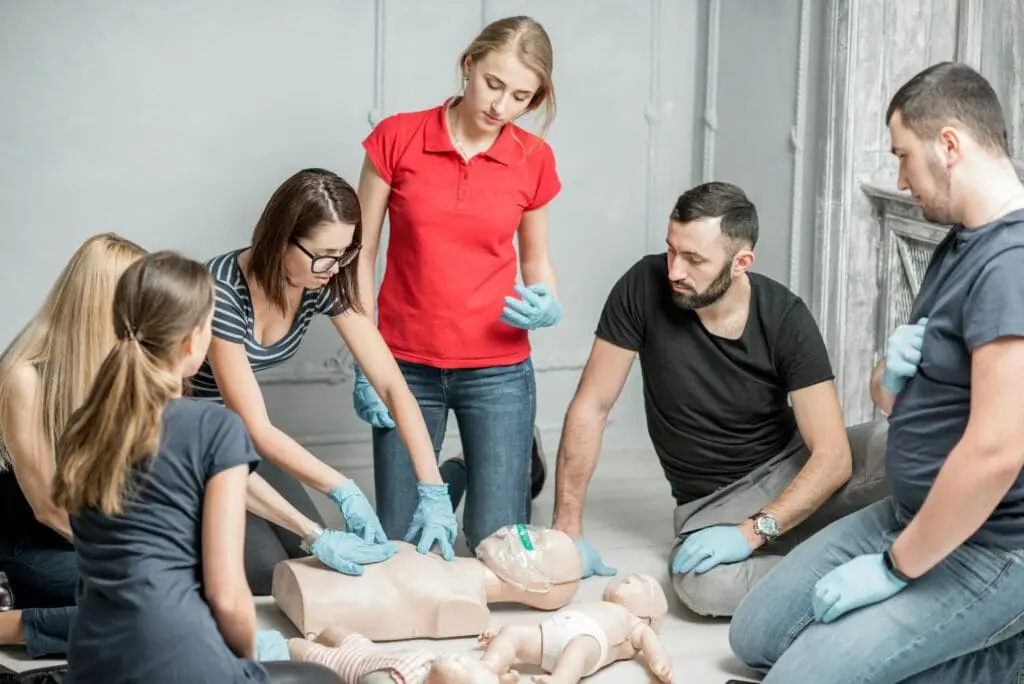
Medical Care in an Outage
During a digital blackout, hospitals can be severely impacted, with critical equipment failures leading to delays and cancellations of essential medical procedures. Emergency services may also be compromised, leaving those without immediate access to transportation in serious danger. This underscores the importance of being prepared to handle medical issues at home. Here’s how you can ensure you’re ready to provide care in a crisis.
Fully Stocked First Aid Kit Backpack
$199.99
Luminary Global Tactical Trauma Kit Fully Stocked First Aid Kit Backpack EMS/EMT First Responder Medical Bug Out Bag for Preppers Professionals and Outdoorsman (Olive Drab)
Stock Up on Medical Supplies
Building a comprehensive medical kit is crucial for handling emergencies when professional medical help is unavailable. Consider including the following items:
- First Aid Kit: A basic first aid kit should include bandages, gauze, adhesive tape, antiseptics, scissors, tweezers, and a digital thermometer.
- Medications: Stock up on over-the-counter medications such as pain relievers, antihistamines, antacids, and anti-diarrheal medications. If anyone in your household requires prescription medications, try to keep an extra supply on hand.
- Wound Care Supplies: Include items like sterile gloves, wound cleaning solutions, antibiotic ointments, and sutures or sterile strips for closing wounds.
- Medical Tools: Have essential tools such as a stethoscope, blood pressure cuff, and a pulse oximeter to monitor vital signs.
- Splints and Braces: These are useful for immobilizing fractures and sprains.
- CPR Mask: A CPR mask can be a lifesaver in case of cardiac arrest.
- Emergency Blankets: These can help prevent hypothermia.
- Burn Treatment Supplies: Include burn dressings, aloe vera gel, and burn ointments.
- Eye Care Supplies: Have saline solution, eye wash, and eye pads available.
- Dental Emergency Kit: This can include temporary fillings, dental wax, and pain relief gel.
In addition to these medical supplies, consider also adding a compact hygiene pack to your kit. This hygiene pack can be incredibly useful in survival situations.
Learn Basic First Aid and Medical Skills
Knowing how to administer basic first aid can make a significant difference in a crisis. Consider taking a certified first aid and CPR course to equip yourself with essential skills, such as:
- CPR (Cardiopulmonary Resuscitation): Learn how to perform CPR on adults, children, and infants.
- Wound Care: Understand how to clean and dress wounds to prevent infection.
- Fracture Management: Learn how to splint broken bones and manage sprains.
- Burn Treatment: Know how to treat different degrees of burns.
- Choking Response: Be familiar with techniques to help someone who is choking.
- Basic Life Support: Understand how to manage airway obstructions, breathing issues, and circulation problems.
- Recognizing Symptoms: Learn to identify symptoms of common medical conditions such as heart attacks, strokes, and allergic reactions.
Create a Medical Emergency Plan
Having a plan in place can help you respond more effectively during a medical emergency:
- Emergency Contacts: Keep a list of emergency contacts, including family members, neighbors, and local emergency services.
- Evacuation Plan: Develop a plan for evacuating your home if necessary, and know the location of the nearest medical facilities.
- Communication Plan: Establish a way to communicate with family members and neighbors in case of an emergency.
- Medical Records: Keep a copy of important medical records, including allergies, medications, and medical history, in a safe and accessible place.
Alternative Medical Resources
In a prolonged outage, traditional medical resources may be scarce. Consider these alternative options:
- Telemedicine: If internet access is available, telemedicine services can provide remote consultations.
- Community Resources: Identify local community centers or shelters that may offer medical assistance.
- Herbal Remedies: Learn about natural remedies and medicinal plants that can be used to treat common ailments. Books on herbal medicine can be a valuable resource.
Mental Health Care
Don’t overlook the importance of mental health during a crisis:
- Stress Management: Practice stress-relief techniques such as deep breathing, meditation, and exercise.
- Support Networks: Maintain communication with friends and family to provide emotional support.
- Mental Health Resources: Have access to mental health hotlines and online resources if available.

Special Considerations for Vulnerable Individuals
If you have family members with special medical needs, take extra precautions:
- Infants and Children: Ensure you have baby formula, diapers, and pediatric medications.
- Elderly: Stock up on any necessary mobility aids, incontinence supplies, and medications.
- Chronic Conditions: Keep an ample supply of medications and equipment needed for managing chronic conditions like diabetes, asthma, or heart disease.
By preparing thoroughly and equipping yourself with the necessary skills and supplies, you can ensure that your household is ready to handle medical emergencies during a digital blackout. This preparation can make a critical difference in maintaining health and safety when professional medical help is unavailable.

Save Cash for Reliable Currency
The outage crippled digital payment systems, leaving many unable to make transactions. Keep cash on hand to avoid being caught without a way to buy essentials. Build a cash savings fund and consider bartering items in extreme, long-term scenarios. I also as a general rule always recommend having at least one blank check on your person, even if you don’t typically write checks.

Avoid Going Hungry
Power disruptions can quickly spoil food stored in refrigerators and freezers, leaving you with a limited supply of fresh items. To ensure you and your family stay nourished during a digital blackout, it’s essential to have a well-thought-out food strategy.
4Patriots 72-Hour Emergency Food Supply Survival Kit, Perfect for Camping, Freeze Dried Preparedness Food, Designed to Last 25 Years, Be Ready with 16 Servings of Delicious Breakfast, Lunch, & Din…
$29.00
Stock Up on Non-Perishable Foods
Start by building a robust pantry of non-perishable foods that can last for months or even years. These items should be high in nutrition and easy to store. Consider stocking up on:
- Canned Goods: Vegetables, fruits, beans, and meats can be lifesavers. They have a long shelf life and can be consumed straight from the can if necessary.
- Dry Goods: Rice, pasta, beans, lentils, and oats are versatile and filling staples that can be stored for extended periods.
- Dehydrated Foods: Items like dried fruits, vegetables, and jerky are lightweight and nutrient-dense, making them ideal for long-term storage.
- Grains and Cereals: Whole grains like quinoa, barley, and bulgur offer excellent nutrition and can be stored easily.
- Nuts and Seeds: These are great sources of protein and healthy fats, and they have a long shelf life.
- Powdered Milk and Eggs: These can be reconstituted with water and used in various recipes.
- Ready-to-Eat Meals: Consider investing in MREs (Meals Ready-to-Eat) or freeze-dried meals specifically designed for emergency situations.
Learn Alternative Cooking Methods
Without electricity, traditional cooking appliances like microwaves, ovens, and stovetops will be useless. It’s crucial to have alternative cooking methods at your disposal:
- Portable Stoves: Propane or butane stoves are excellent for cooking without electricity. Ensure you have enough fuel stored safely.
- Camping Gear: Items like portable grills, campfire tripods, and Dutch ovens can be incredibly useful.
- Solar Ovens: These eco-friendly devices use the sun’s energy to cook food and can be a great investment.
- Fire Pit: If you have outdoor space, a fire pit can serve as a reliable cooking method. Make sure you have a supply of firewood or charcoal.
- Rocket Stoves: These are efficient and use small amounts of wood to create high heat, perfect for cooking in a pinch.
Foraging and Hunting
In a prolonged digital blackout, your stored food might eventually run out. Knowledge of local foraging and hunting can be invaluable:
- Foraging: Learn to identify edible plants, berries, nuts, and mushrooms in your local area. Invest in a good foraging guidebook specific to your region.
- Fishing: If you live near a body of water, fishing can provide a steady source of protein. Keep fishing gear and supplies on hand.
- Hunting: Familiarize yourself with local wildlife and hunting regulations. Basic hunting skills and equipment can help you secure meat in a survival situation.
- Trapping and Snaring: These methods can catch small game like rabbits and squirrels. Learn how to set traps and snares effectively and humanely.
Gardening
Growing your own food can provide a sustainable source of fresh produce:
- Vegetable Garden: Start a garden with hardy, easy-to-grow vegetables like potatoes, carrots, and leafy greens.
- Herb Garden: Herbs like basil, mint, and rosemary can enhance your meals and have medicinal properties.
- Fruit Trees and Bushes: Plant fruit-bearing trees and bushes for a renewable source of fresh fruit.
Complete Home Canning Set
$89.99
Canning Pot with Rack and full Set + ½ Pint ladle Measuring Cups – Supplies Kit for Beginner, Food Grade Stainless Steel Accessories Starter
Preservation Techniques
Learn preservation methods to extend the shelf life of your food:
- Canning: Home-canning fruits, vegetables, and meats can keep them safe to eat for years.
- Drying: Dehydrating fruits, vegetables, and meats can make them last longer and are easy to store.
- Pickling: Pickled foods can last for months and add variety to your diet.
- Smoking: Smoking meats can preserve them and add flavor.
By taking these steps, you can ensure that your family remains well-fed and healthy, even in the face of a prolonged digital blackout. Preparedness is key to navigating such challenging scenarios smoothly.

Meet Your Daily Water Needs
A tech outage can severely compromise water treatment plants, leading to unsafe drinking water and potential shortages. Ensuring access to clean drinking water is vital for your health and survival. Here’s how you can prepare to meet your daily water needs during a prolonged digital blackout.
6-Pack of Stackable 3.5 Gallon Water Container Bricks
$127.50
International Water Storage Containers for Emergency Water Storage | Food-Grade HDPE Plastic | BPA-Free | STD Blue
Store Clean Water
The first step in ensuring you have enough clean water is to store an adequate supply. Here’s how to do it effectively:
- Determine Your Needs: The general recommendation is to store at least one gallon of water per person per day. This amount covers both drinking and basic hygiene needs. Aim to store enough water for at least three days, but ideally, have a two-week supply.
- Choose the Right Containers: Use food-grade containers specifically designed for storing potable water. These containers should be thoroughly cleaned before use and tightly sealed to prevent contamination or evaporation. Avoid using containers that previously held chemicals or non-food items, as they may contaminate the stored water.
- Proper Storage: Keep your stored water in a cool, dark place away from direct sunlight or extreme temperature fluctuations. This will help prevent the growth of algae and bacteria.
- Rotate Your Supply: Water should be rotated every six months to ensure it remains fresh. Mark the date on your containers to keep track of when they need to be replaced.
- Commercially Bottled Water: In addition to your stored water, consider keeping a supply of commercially bottled water, which has a longer shelf life and is sealed for safety.
Familiarize Yourself with Natural Water Sources
In a prolonged outage, your stored water may eventually run out. Knowing how to locate and utilize natural water sources can be crucial:
- Local Water Sources: Identify nearby natural water sources such as rivers, streams, lakes, and ponds. Be aware of their locations and the best routes to access them.
- Rainwater Harvesting: Set up a rainwater harvesting system to collect rainwater from your roof. Use storage tanks equipped with filters or purifiers to ensure the water is safe for consumption.
- Groundwater: If you have a well, ensure it is properly maintained and consider installing a manual pump as a backup to electric pumps.
- Snow and Ice: In colder climates, snow and ice can be melted for drinking water. However, it should be purified before consumption.
Survival Water Filters
Shop Amazon Water Filters for some of the best deals.
Water Filtration Methods
Natural water sources may not be safe to drink without proper treatment. Here are some effective filtration methods:
- Boiling: Boiling water is one of the most reliable methods to kill harmful microorganisms. Bring the water to a rolling boil for at least one minute (or three minutes if at an altitude above 6,562 feet) and let it cool before drinking.
- Portable Water Filters: Invest in portable water filters, such as those made by LifeStraw or Sawyer. These filters can remove bacteria, protozoa, and other contaminants.
- Water Purification Tablets: Use water purification tablets or liquid disinfectants specifically designed for treating contaminated water. These products typically contain chlorine, iodine, or other compounds that effectively kill harmful bacteria and viruses. Follow the instructions on the packaging for proper use.
- Activated Carbon Filters: These filters can remove chemicals, pesticides, and heavy metals from water. They are often used in conjunction with other filtration methods.
- UV Water Purifiers: UV purifiers use ultraviolet light to kill bacteria, viruses, and other pathogens. They are effective but require battery power or solar charging.
DIY Water Filtration Systems
In an emergency, you can create your own water filtration system using simple materials:
- Sand and Gravel Filter: Layer sand, gravel, and activated charcoal in a large container with small holes at the bottom. Pour water through the layers to filter out impurities.
- Cloth Filtration: Use a clean cloth or bandana to filter out large particles and debris from water before boiling or using another purification method.
Water Conservation Tips
Conserving water is essential when your supply is limited:
- Prioritize Drinking Water: Ensure you have enough water for drinking and essential hygiene first.
- Reuse Water: Collect and reuse water for non-drinking purposes, such as flushing toilets or watering plants.
- Minimize Water Usage: Take shorter showers, turn off taps when not in use, and use a basin to wash dishes instead of running water continuously.
Emergency Water Sources
In extreme situations, you may need to rely on unconventional water sources:
- Water Heaters: The tank of your water heater can provide a significant amount of clean water. Turn off the power supply and open the drain valve to access the water.
- Toilet Tanks: The water in the toilet tank (not the bowl) can be used for drinking if it is free from cleaning chemicals.
- Canned Goods: The liquid in canned fruits and vegetables can provide additional hydration.
Educate Your Household
Ensure that all household members know how to access and purify water in an emergency. Conduct regular drills and practice using water filtration methods to build confidence and preparedness.
By taking these steps, you can ensure that your household has access to clean drinking water during a digital blackout. Proper preparation and knowledge of water sources and purification methods are vital for maintaining health and safety in challenging circumstances.

Getting Through Transportation Setbacks
Digital outages can disrupt various aspects of transportation, from navigation systems to gas pumps, leading to significant challenges in mobility. Being prepared for these setbacks can ensure you remain mobile and can reach your destination safely. Here’s how to navigate transportation issues during a digital blackout.
Keep Physical Maps and a Compass Handy
In the age of GPS and digital navigation, physical maps often get overlooked. However, they are invaluable during a digital outage:
- Acquire Detailed Maps: Obtain detailed maps of your local area, region, and any areas you frequently travel to. Topographic maps can be particularly useful for off-road or rural travel.
- Learn to Read Maps: Familiarize yourself with reading maps and using a compass. Practice plotting routes and navigating without digital aids.
- Store Maps Safely: Keep your maps and compass in a waterproof, durable case to protect them from damage.
Consider Alternative Transportation
When traditional transportation methods are disrupted, alternative options can help you stay mobile:
- Bicycles: Bicycles are a reliable and eco-friendly mode of transportation. Ensure your bike is well-maintained and keep essential repair tools and spare parts on hand.
- Electric Bikes and Scooters: These can be useful for longer distances, but remember they require charging. Have a manual backup plan in case power is unavailable.
- Skateboards and Longboards: These are handy for short distances and urban environments. Ensure you have protective gear such as helmets and pads.
- Walking: Sometimes the simplest option is the best. Good-quality walking shoes and a sturdy backpack can make longer treks more manageable.
- Carpooling and Ridesharing: Coordinate with neighbors or colleagues to share rides, reducing the strain on individual resources.
- Public Transportation: If available, public transit systems like buses and trains can be a reliable option. Keep a pre-paid transit card or cash for fares.
Maintain Your Vehicle
A well-maintained vehicle is crucial during a transportation setback:
- Regular Maintenance: Ensure your vehicle undergoes regular maintenance checks, including oil changes, tire rotations, and brake inspections.
- Fuel Storage: Keep your gas tank at least half full at all times. Consider storing extra fuel in approved containers, but be aware of safety regulations and storage conditions.
- Spare Parts and Tools: Carry essential spare parts like fuses, belts, and hoses, along with a toolkit for basic repairs.
- Emergency Kit: Equip your vehicle with an emergency kit that includes items like a spare tire, jack, jumper cables, flares, a flashlight, blankets, and non-perishable food.
Travel Insurance and Flight Considerations
While travel insurance can provide peace of mind, it may not always be cost-effective. Here are some considerations:
- Evaluate Travel Frequency: If you travel frequently, the cumulative cost of travel insurance may outweigh the benefits. Instead, focus on airlines with flexible policies.
- Airline Policies: Research airlines that offer generous rebooking or credit policies. For instance, Delta often provides flight credits, especially for frequent travelers.
- Loyalty Programs: Join airline loyalty programs to gain access to additional benefits and support in case of disruptions.
- Direct Communication: Develop a habit of direct communication with airline representatives during disruptions. Being polite and persistent can often yield favorable outcomes.

Prepare for Fuel Shortages
Fuel shortages can be a major issue during a digital outage. Here’s how to mitigate the impact:
- Fuel Storage: Store extra fuel in approved containers, ensuring they are kept in a safe and ventilated area. Rotate stored fuel regularly to keep it fresh.
- Fuel Efficiency: Drive efficiently to conserve fuel. Avoid rapid acceleration, excessive idling, and maintain a steady speed.
- Alternative Fuels: If possible, consider vehicles that run on alternative fuels like diesel, propane, or electricity. Ensure you have access to the necessary refueling infrastructure.
Plan and Practice Routes
Having pre-planned routes can save time and stress during a transportation setback:
- Primary and Secondary Routes: Plan multiple routes to your common destinations, including primary and secondary options. Consider routes that avoid high-traffic areas and potential hazards.
- Landmarks and Waypoints: Identify key landmarks and waypoints along your routes to help with navigation.
- Practice Runs: Conduct practice runs of your routes to familiarize yourself with the terrain and potential challenges.
WETBAS Car Roadside Emergency Kit
$34.99
Auto Vehicle Safety Emergency Road Side Assistance Kits Essentials, Solenoid Starter Repair Kit with Jumper Cables, Safety Hammer, Reflective Warning Triangle
Emergency Transportation Kit
Prepare an emergency transportation kit to keep in your vehicle or backpack:
- Maps and Compass: Include physical maps and a compass for navigation.
- Portable Charger: Keep a portable charger for your phone or other electronic devices.
- Multi-tool: A multi-tool can be useful for various repairs and tasks.
- First Aid Kit: Include a basic first aid kit for minor injuries.
- Water and Snacks: Keep bottled water and non-perishable snacks for hydration and energy.
- Weather Gear: Include items like a rain poncho, gloves, and a hat to protect against the elements.
Community Coordination
Working with your community can enhance your mobility during a transportation setback:
- Neighborhood Groups: Form neighborhood groups to coordinate transportation resources and support each other.
- Community Resources: Identify community resources like local shelters, community centers, and emergency services that can provide assistance.
- Shared Resources: Pool resources like fuel, tools, and transportation options to maximize efficiency and support.
By taking these steps, you can ensure that you remain mobile and can navigate transportation setbacks during a digital blackout. Proper preparation and flexible planning are key to maintaining your mobility and reaching your destinations safely.

Secure Your Home Without Relying on Technology
In the event of a digital outage, modern security systems that rely on electricity and internet connectivity can become ineffective. To ensure your home remains protected from potential threats, it’s crucial to implement physical security measures as a reliable backup. Here’s how you can secure your home without relying on technology.
Reinforce Doors and Windows
Doors and windows are the primary entry points for intruders. Strengthening these areas can significantly enhance your home’s security:
- Solid Core Doors: Install solid core or metal doors for all exterior entrances. These doors are more resistant to forced entry than hollow core doors.
- Deadbolt Locks: Use high-quality deadbolt locks on all exterior doors. Ensure the deadbolt extends at least one inch into the door frame.
- Strike Plates: Reinforce strike plates with longer screws (at least three inches) that penetrate the wall stud behind the door frame.
- Door Jamb Reinforcement: Install door jamb reinforcement kits to prevent the door frame from splitting during a forced entry attempt.
- Window Locks: Ensure all windows have sturdy locks. Consider adding secondary locks or window pins for added security.
- Security Bars: Install security bars or grilles on accessible windows, especially basement and ground-level windows. Ensure they can be quickly removed from the inside in case of an emergency.
- Shatter-Resistant Film: Apply shatter-resistant film to windows to make them more difficult to break.
Install Physical Barriers
Physical barriers can deter intruders and make it more difficult for them to access your property:
- Fencing: Erect a sturdy fence around your property. Choose materials like wood, metal, or vinyl that are difficult to climb or break through. Ensure the fence is tall enough to deter intruders.
- Gates: Install lockable gates at all entry points to your property. Use heavy-duty locks and consider adding a secondary locking mechanism for added security.
- Security Landscaping: Use strategic landscaping to create natural barriers. Plant thorny bushes or dense shrubs near windows and along fence lines to deter intruders.
- Gravel Paths: Lay gravel paths around your property. The noise created by walking on gravel can alert you to the presence of intruders.
Enhance Outdoor Lighting
Good lighting is a powerful deterrent against intruders. Even in a digital outage, you can maintain effective outdoor lighting:
- Solar-Powered Lights: Install solar-powered motion-sensor lights around your property. These lights charge during the day and provide illumination at night, even during a power outage.
- Battery-Powered Lights: Use battery-powered or hand-crank flashlights and lanterns for temporary lighting in case of an emergency.
- Strategic Placement: Place lights at key points, such as entryways, pathways, and dark corners, to eliminate hiding spots.
Create a Perimeter Defense
Establishing a secure perimeter around your property can prevent intruders from getting close to your home:
- Driveway Alarms: Install driveway alarms that use passive infrared sensors to detect movement. These alarms can alert you to the presence of intruders approaching your property.
- Warning Signs: Post visible warning signs, such as “Beware of Dog” or “Property Under Surveillance,” to deter potential intruders.
- Dogs: Consider having a guard dog or a dog that barks at strangers. Even the sound of a barking dog can be a strong deterrent.
- Neighborhood Watch: Collaborate with neighbors to form a neighborhood watch program. Keep an eye out for suspicious activity and communicate regularly to share information.
Secure the Interior of Your Home
In addition to securing the exterior, take steps to protect the interior of your home:
- Interior Locks: Use interior locks on doors leading to important rooms, such as bedrooms and offices. This adds an extra layer of security if an intruder gains entry.
- Safes: Store valuable items, important documents, and firearms in a heavy-duty safe. Ensure the safe is bolted to the floor or wall to prevent it from being carried away.
- Hide Valuables: Keep valuable items out of sight. Use hidden compartments or concealment furniture to store cash, jewelry, and other valuables.
- Panic Room: If feasible, create a safe room or panic room within your home. This room should have reinforced walls and doors, a communication device, and essential supplies.
Develop Security Protocols
Establishing security protocols can help you and your family respond effectively to potential threats:
- Family Emergency Plan: Create a family emergency plan that includes procedures for securing the home, contacting authorities, and evacuating if necessary.
- Regular Drills: Conduct regular security drills to practice your emergency plan. Ensure all family members know how to lock doors and windows, use emergency exits, and contact emergency services.
- Communication: Establish a communication plan to stay in touch with family members during an emergency. Use walkie-talkies or other non-digital communication devices if necessary.
- Safe Word: Create a safe word that family members can use to signal an emergency or the presence of an intruder.

Stay Informed and Vigilant
Staying informed and vigilant can help you anticipate and respond to security threats:
- Local News: Stay updated on local news and community alerts to be aware of potential security threats in your area.
- Social Media: Use social media groups or community forums to share information and stay connected with neighbors.
- Trust Your Instincts: Trust your instincts and report any suspicious activity to the authorities. It’s better to be cautious and proactive in ensuring your safety.
By implementing these physical security measures, you can effectively protect your home and family during a digital outage. These steps not only provide a reliable backup to modern security systems but also create a robust defense against potential threats, ensuring peace of mind and safety in challenging situations.
Be Able to Learn Without Tech
While the internet offers a wealth of information at your fingertips, relying solely on digital resources can leave you vulnerable during a tech outage. To ensure you can continue learning and developing essential skills without technology, it’s crucial to have offline alternatives. Here’s how you can prepare to learn and thrive without relying on the internet.
The Ultimate Prepper’s Survival Bible
$23.99
15 in 1: Your Complete Guide to Surviving Any Crisis with Expert Strategies for Prepping, Gear, First Aid, Food Storage, Water Filtration, Self Defense &…
Build a Comprehensive Library
A well-stocked library of physical books can be an invaluable resource. Focus on acquiring books that cover a wide range of essential skills and knowledge:
- Survival Skills: Invest in books that teach wilderness survival, urban survival, and emergency preparedness. Look for guides on building shelters, finding food and water, and first aid.
- Recommended Titles: “SAS Survival Handbook” by John ‘Lofty’ Wiseman, “Bushcraft 101” by Dave Canterbury.
- Cooking and Food Preservation: Learn how to cook from scratch, preserve food, and create nutritious meals with limited resources. Include cookbooks, guides on canning, fermenting, and dehydrating food.
- Recommended Titles: “The Joy of Cooking” by Irma S. Rombauer, “Ball Complete Book of Home Preserving” by Judi Kingry.
- Self-Defense and Personal Safety: Study self-defense techniques, situational awareness, and home security measures. Books on martial arts, defensive tactics, and personal safety can be helpful.
- Recommended Titles: “The Gift of Fear” by Gavin de Becker, “Krav Maga: How to Defend Yourself Against Armed Assault” by Imi Sde-Or.
- Gardening and Agriculture: Learn how to grow your own food, manage a garden, and raise livestock. Books on permaculture, organic gardening, and small-scale farming are essential.
- Recommended Titles: “The Vegetable Gardener’s Bible” by Edward C. Smith, “Gaia’s Garden” by Toby Hemenway.
- Medical and First Aid: Equip yourself with knowledge on basic and advanced first aid, herbal medicine, and emergency medical care. Look for comprehensive medical guides and first aid manuals.
- Recommended Titles: “Where There Is No Doctor” by David Werner, “The Survival Medicine Handbook” by Joseph Alton and Amy Alton.
- DIY and Home Maintenance: Learn how to repair and maintain your home, including plumbing, electrical work, and carpentry. Books on DIY projects and home improvement can be invaluable.
- Recommended Titles: “The Complete Do-it-Yourself Manual” by Editors of Family Handyman, “Black & Decker The Complete Guide to Home Repair.”
- Practical Skills: Acquire books on a variety of practical skills, such as sewing, knitting, woodworking, and mechanics. These skills can be useful in everyday life and during emergencies.
- Recommended Titles: “The Reader’s Digest Complete Do-It-Yourself Manual,” “The Complete Manual of Woodworking” by Albert Jackson, David Day, and Simon Jennings.
Expand Your Knowledge Now
Don’t wait for a crisis to start learning. Begin expanding your knowledge and skills now to be better prepared later:
- Take Classes and Workshops: Enroll in local classes and workshops that teach essential skills. Community centers, local colleges, and specialized schools often offer courses in cooking, self-defense, gardening, and more.
- Join Clubs and Groups: Participate in clubs and groups related to your interests. Gardening clubs, hiking groups, and martial arts dojos provide opportunities to learn from experienced practitioners and share knowledge with others.
- Practice Regularly: Put your knowledge into practice regularly. Cook new recipes, work on DIY projects, and practice self-defense techniques to build confidence and proficiency.
- Learn from Experts: Seek out mentors and experts in various fields. Learning directly from experienced individuals can provide valuable insights and hands-on experience.
Create a Learning Environment
Establishing a conducive learning environment at home can help you stay focused and motivated:
- Dedicated Space: Set up a dedicated space for learning and practicing new skills. This could be a home library, a workshop, or a garden area.
- Organize Resources: Keep your books, tools, and supplies organized and easily accessible. Use shelves, storage bins, and labeled containers to maintain order.
- Schedule Learning Time: Allocate specific times for learning and practicing new skills. Consistent practice helps reinforce knowledge and build muscle memory.
Use Non-Digital Learning Tools
In addition to books, other non-digital learning tools can be beneficial:
- Flashcards: Create flashcards for memorizing important information, such as first aid procedures, plant identification, or self-defense techniques.
- Notebooks and Journals: Keep notebooks and journals to document your learning progress, jot down important tips, and track your experiments and projects.
- Manuals and Guides: Use printed manuals and guides for step-by-step instructions on various tasks and projects.
Develop Critical Thinking and Problem-Solving Skills
Being able to think critically and solve problems is essential during a crisis:
- Puzzles and Games: Engage in puzzles, brainteasers, and strategy games to sharpen your critical thinking and problem-solving skills.
- Scenario Planning: Conduct scenario planning exercises to anticipate potential challenges and develop solutions. Discuss these scenarios with family members to ensure everyone is prepared.
- Hands-On Projects: Work on hands-on projects that require planning, creativity, and resourcefulness. Building, repairing, and crafting can enhance your problem-solving abilities.
Foster a Culture of Learning
Encourage a culture of continuous learning within your household:
- Family Learning Activities: Involve family members in learning activities, such as cooking together, gardening, or practicing first aid. Shared experiences can strengthen bonds and create a supportive learning environment.
- Knowledge Sharing: Share your knowledge and skills with others. Teaching what you’ve learned reinforces your understanding and helps build a resilient community.
- Stay Curious: Cultivate a mindset of curiosity and lifelong learning. Stay open to new ideas, seek out new experiences, and never stop exploring.
By preparing to learn without relying on technology, you can ensure that you and your family remain knowledgeable and capable in any situation. Building a comprehensive library, expanding your skills now, and fostering a culture of continuous learning will help you thrive during a digital outage and beyond.

Keep Your Temperature Regulated in an Outage
Extreme temperatures can pose significant health risks, especially during a power outage when air conditioning or heating systems are unavailable. Preparing for both hot and cold weather conditions is essential to ensure your household remains safe and comfortable. Here’s how to regulate your temperature effectively during an outage.
Preparation for Hot Weather
High temperatures can lead to dehydration, heat exhaustion, and heatstroke. To stay cool during a power outage, consider the following strategies:
- Appropriate Clothing: Wear lightweight, loose-fitting, and light-colored clothing. Natural fabrics like cotton and linen are breathable and help keep you cool.
- Hydration: Drink plenty of water to stay hydrated. Avoid caffeine and alcohol, as they can dehydrate you. Keep a stockpile of bottled water or have a reliable way to purify water.
- Shade and Ventilation: Use shades, blinds, or curtains to block direct sunlight from entering your home. Open windows and doors to create cross-ventilation and allow cooler air to circulate.
- DIY Cooling Methods: Create makeshift air conditioners using coolers filled with ice or frozen water bottles and a fan to blow cool air. Take cool showers or use damp cloths to lower your body temperature.
- Basements and Lower Levels: Spend time in the coolest parts of your home, such as the basement or lower levels, where temperatures are generally lower.
- Outdoor Activities: Avoid strenuous outdoor activities during the hottest parts of the day. If you need to be outside, take frequent breaks in the shade and drink water regularly.
- Cooling Centers: Identify local cooling centers, such as community centers, libraries, or shopping malls, where you can go to escape the heat.
Preparation for Cold Weather
Extreme cold can lead to hypothermia and frostbite. To stay warm during a power outage, consider the following strategies:
- Layered Clothing: Wear multiple layers of clothing to trap body heat. Start with moisture-wicking base layers, add insulating layers like fleece or wool, and finish with a windproof and waterproof outer layer.
- Blankets and Sleeping Bags: Stock up on heavy blankets, quilts, and sleeping bags rated for low temperatures. Use them to create a warm sleeping area.
- Heat Retention: Close off unused rooms to concentrate heat in a smaller area. Use heavy curtains or blankets to cover windows and doors to reduce heat loss.
- Alternative Heating Sources: Use safe alternative heating sources, such as wood stoves, fireplaces, or portable propane heaters. Ensure proper ventilation to prevent carbon monoxide buildup.
- Hot Water Bottles: Fill hot water bottles or use heat packs to provide localized warmth. Place them in your bed or under your clothing to stay warm.
- Exercise: Engage in light physical activity to generate body heat. Simple exercises like jumping jacks or brisk walking can help raise your body temperature.
- Emergency Shelter: If your home becomes too cold to stay in, identify local emergency shelters or warming centers where you can go for warmth and safety.
Utilize Your Home’s Natural Temperature Zones
Understanding and leveraging your home’s natural temperature zones can help you stay comfortable during an outage:
- South-Facing Rooms: In the winter, spend time in south-facing rooms that receive more sunlight and tend to be warmer. In the summer, avoid these rooms during the hottest parts of the day.
- Insulated Areas: Use well-insulated areas of your home to your advantage. Rooms with good insulation retain heat better in the winter and stay cooler in the summer.
- Basements: Basements are generally cooler in the summer and can provide a refuge from the heat. In the winter, they can be colder, so focus on heating upper levels where warm air rises.
- Attics: Properly insulated attics can help regulate the temperature in your home. Ensure your attic has adequate insulation to prevent heat loss in the winter and reduce heat gain in the summer.
Stock Up on Essential Gear
Having the right gear on hand can make a significant difference in maintaining a comfortable temperature during an outage:
- Thermal Blankets: Invest in thermal or emergency blankets that reflect body heat and provide excellent insulation.
- Portable Fans: Battery-operated or hand-crank fans can help with air circulation and cooling.
- Hand Warmers: Disposable or rechargeable hand warmers can provide additional warmth during cold weather.
- Solar-Powered Devices: Solar-powered fans, lights, and chargers can be useful during prolonged outages.
- Backup Generators: Consider having a backup generator to power essential appliances, including heating and cooling devices. Ensure you have enough fuel and know how to operate the generator safely.
Develop a Temperature Regulation Plan
Creating a plan for temperature regulation can help you and your family stay safe and comfortable during an outage:
- Emergency Kits: Include temperature regulation items in your emergency kits, such as blankets, fans, and water bottles.
- Family Communication: Discuss your temperature regulation plan with family members and ensure everyone knows what to do in extreme weather conditions.
- Practice Drills: Conduct practice drills to ensure everyone is familiar with the procedures for staying cool or warm during an outage.
Reducing Tech Dependency
Reducing your dependency on technology is crucial for surviving a digital blackout. By implementing these tips and strategies, you can ensure your household can navigate temperature extremes smoothly and safely:
- Knowledge and Skills: Educate yourself and your family on temperature regulation techniques and survival skills. Knowledge is power, especially during emergencies.
- Community Resources: Stay informed about community resources, such as cooling and warming centers, and know how to access them if needed.
- Stay Informed: Keep a battery-powered or hand-crank radio to stay updated on weather conditions and emergency information.
By preparing for both hot and cold weather conditions, stocking up on appropriate gear, and understanding how to use your home’s natural temperature zones, you can effectively regulate your temperature during an outage. These proactive measures will help ensure the safety and comfort of your household, even in the absence of modern technology.
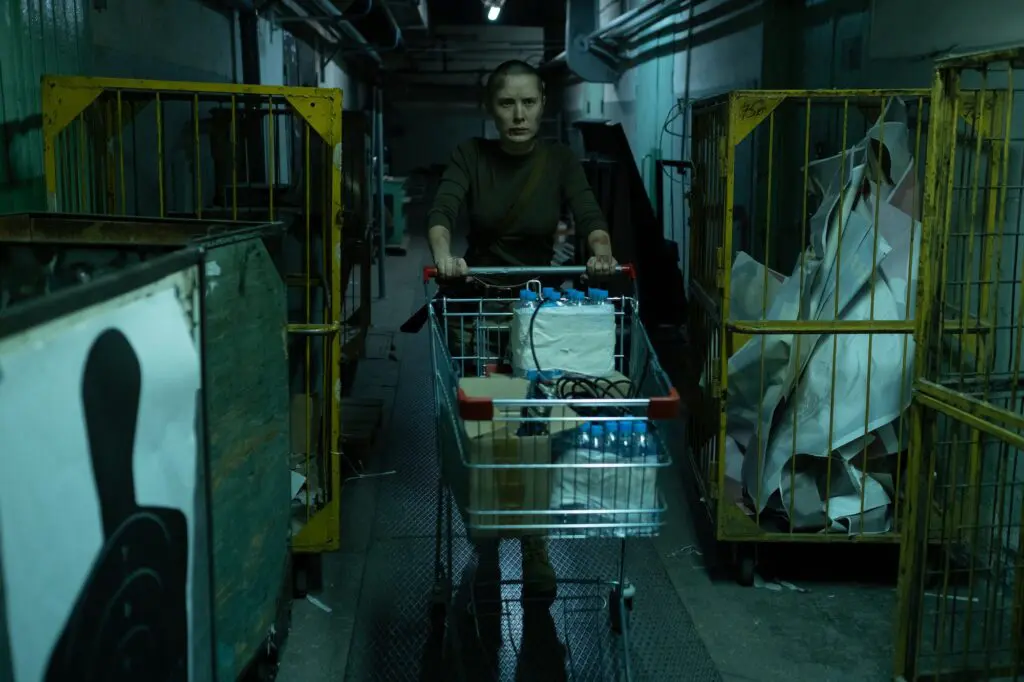
Conclusion: Building Resilience in a Digital Age
As our world becomes increasingly dependent on digital technology, the potential for a prolonged digital blackout poses a significant threat to our way of life. The mid-July 2024 outage served as a wake-up call, highlighting the fragility of our global tech infrastructure and the cascading effects that can result from a single point of failure. While this event was inconvenient, it was far from the worst-case scenario.
Imagining a more severe and extended blackout forces us to confront the reality that our modern conveniences could be stripped away, leaving us to rely on our preparedness, knowledge, and community resilience. The repercussions of such a scenario would be far-reaching, impacting every aspect of our daily lives, from accessing basic necessities to maintaining social order.
However, this potential crisis also provides an opportunity to take proactive steps now to ensure we are better equipped to handle such events. By developing a comprehensive emergency plan, building a robust knowledge base, fostering strong community connections, and staying informed and adaptable, we can significantly enhance our ability to navigate a prolonged digital blackout.
Key Takeaways:
- Emergency Preparedness: Stock up on essential supplies, develop a detailed emergency plan, and ensure your family knows what to do in various scenarios.
- Skill Development: Invest time in learning and practicing essential survival skills, home maintenance, and food preservation techniques.
- Community Building: Strengthen ties with your neighbors and community members to create a support network that can share resources and knowledge.
- Adaptability: Stay flexible and open to new solutions, and always be ready to adjust your plans based on the evolving situation.
By taking these steps, you can transform a potentially devastating crisis into a manageable challenge. The goal is not just to survive but to thrive, maintaining your family’s safety and well-being even in the absence of modern technology.
In a world where digital blackouts are a real possibility, building resilience is not just a precaution—it’s a necessity. By preparing now, you can ensure that you and your loved ones are ready to face whatever challenges come your way, turning uncertainty into an opportunity for growth and self-reliance.
Remember, the best time to prepare is before a crisis occurs. Start today, and empower yourself with the knowledge and resources needed to weather any storm. Your future self will thank you.






















